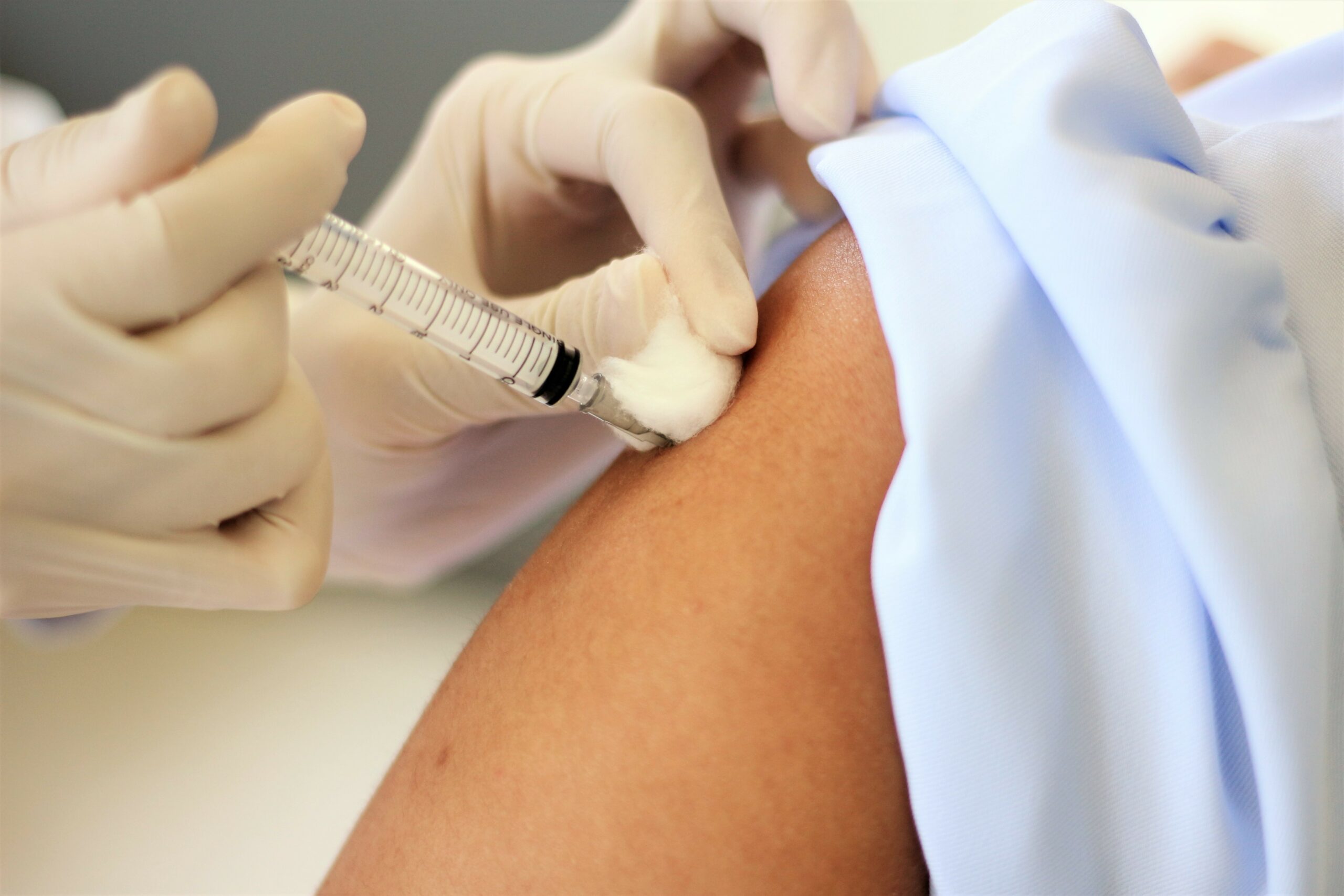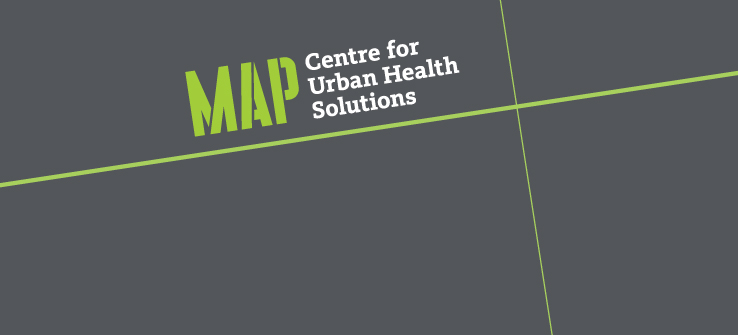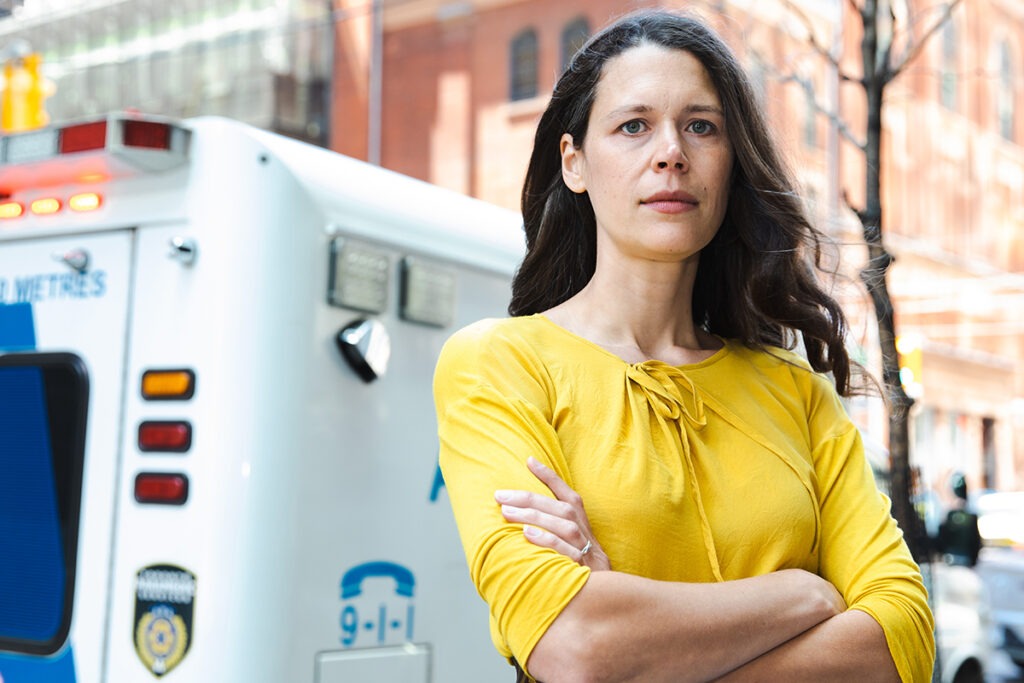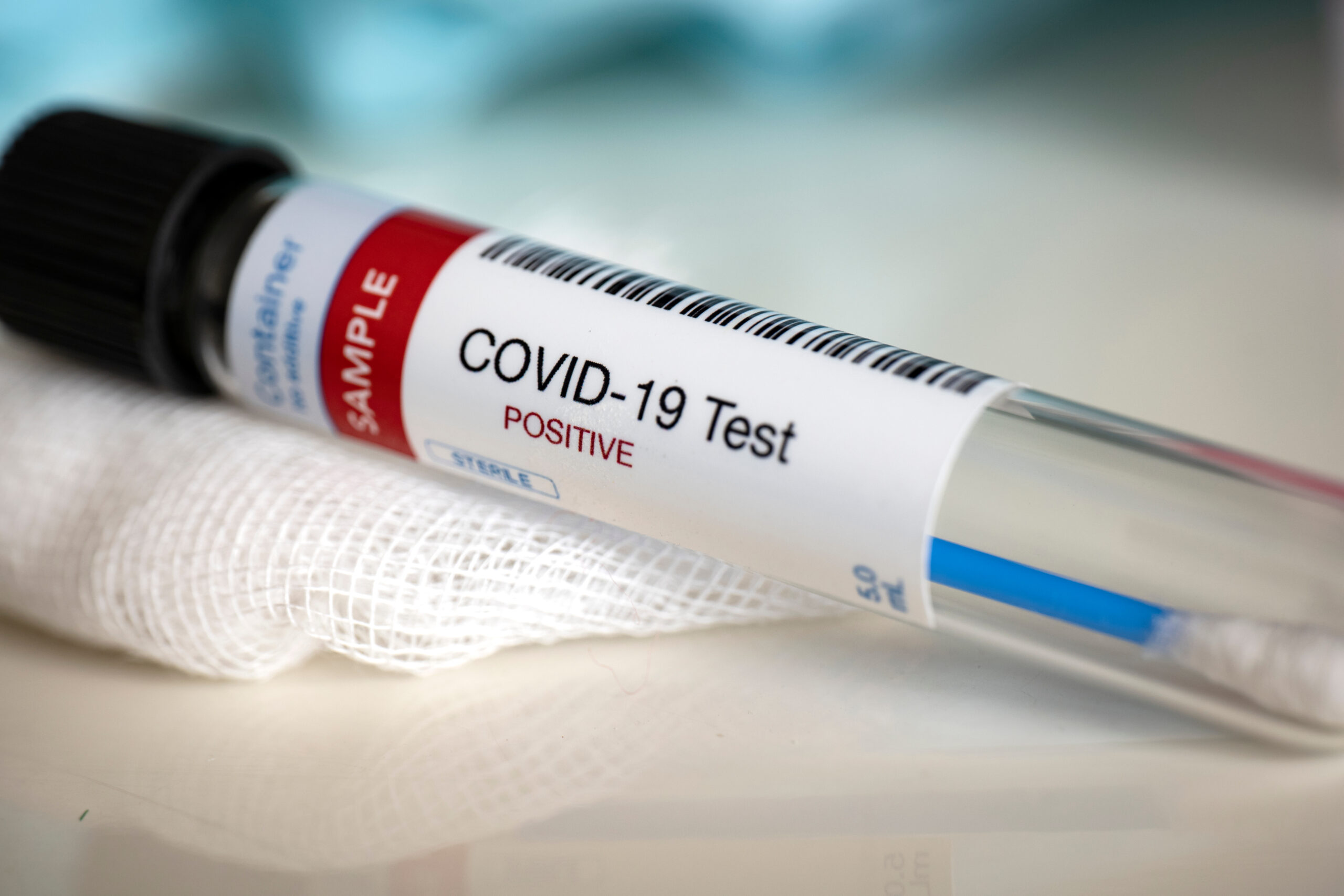Dr. Ann Burchell wrote about the Engage Study for a recent edition of the CATIE blog. The study looked to understand HPV vaccine uptake among men who have sex with men, and has provided much-needed evidence that HPV vaccination helps prevent HPV infections linked to anal cancers.
Author: Samira Prasad
Tackling HIV stigma: Why it’s important and what needs to be done
MAP’s James Watson, Shyamaly Vasuthevan and Jason Tian co-authored this op-ed for Healthy Debate about the ways people living with HIV still experience stigma, the importance of tackling it, and ways in which people can stand up to it.
Potent animal tranquilizer found in Toronto’s street drug supply for 1st time
MAP Community Scholar Zoe Dodd and Hayley Thompson of MAP’s Drug Checking Service were quoted in this CBC article covering the spike in animal tranquilizers found in the unregulated drug supply.
Family doctors’ burnout is about more than their workload
Dr. Tara Kiran spoke with The Walrus about family physician burnout and some potential solutions. She also shared learnings from the OurCare project.
‘We’re seeing it in London now’: Harm reduction workers warn of animal sedative found in street drugs
Dr. Tara Gomes recently spoke with CBC about the rise in animal tranquilizers found in street drugs. Dr. Gomes is calling on provincial and federal level governments to increase support for harm reduction and treatment services.
COVID-19 reinfection rates high among people who are homeless, Toronto study says
COVID reinfection rates are more than twice as high in those who are unhoused compared to those who are housed, according to new MAP research published in BMC Infectious Diseases. Lead author Lucie Richard spoke with the Canadian Press about the study.
Spending more money on police shows no clear link to lower crime levels
In this article in The New York Times, Melanie Seabrook spoke about her recent study that found increased police spending has no consistent correlation with lower crime rates.
At least 47% of people experiencing homelessness in Toronto had a history of SARS-CoV-2 infection by early 2022
The COVID-19 Immunity Task Force featured this summary of the Ku-gaa-gii pimitizi-win study in a recent news piece. The research team reported the prevalence of COVID-19 infection at baseline, incidence of first COVID-19 infections by six months of follow-up, and the rate of vaccination among people experiencing homelessness in Toronto.
From Awareness to Action: Supporting Equitable Preventative Care with a Few Yes/No Questions
The University of Toronto’s Department of Family and Community Medicine recently shared this story on Drs. Nav Persaud and Aisha Lofter’s Screening.ca tool for preventative care. The tool requires only your age and answers to a few yes-no questions to get a custom list of preventative care recommendations and has been used over 10,000 times since launching in Sepember 2023.
A huge development for DoseCheck: Q&A with Dr. Dan Werb
January 17, 2024
By Samira Prasad
Recently, the U.S. National Institutes of Health (NIH) signed on to fund MAP’s emerging drug checking technology DoseCheck, and partnered to collaborate on further developing DoseCheck’s overdose prevention potential. A commercial venture also funded by Health Canada and the St. Michael’s Foundation, Dosecheck is a small handheld device and free smartphone app that allow anyone to rapidly test their drug samples right where they are, with no training required, and then share results across a community network through the app.
Over the next four years, MAP scientist and DoseCheck lead Dr. Dan Werb will work with the NIH on two rounds of timed evaluations to improve DoseCheck’s efficiency at identifying emerging and unknown street drugs. This work will be based at MAP and the University of California San Diego.
We recently spoke to Dr. Werb about what all of this means for DoseCheck, and how this technology can fill a crucial gap in the current overdose crisis.
Congratulations on the new NIH funding! What does this mean for DoseCheck?
This is a huge development for DoseCheck. It means that we now have the resources to get this technology to where it needs to be to save people’s lives around the world. It is a cooperative agreement with the NIH, which means they have assigned one of their intramural scientists to our team. This is very exciting – we have gained a really smart and informed technical expert who can help us with all aspects of the technology, from identifying which drugs are out there, to overcoming any challenges in detecting certain drugs, as well as thinking more broadly about how we can deploy it in places where people are at highest risk of dying of overdoses.
Can you tell us a little bit about the timed evaluations?
This is actually inspired by some of the work that the NIH did in collaboration with Moderna, prior to COVID-19, and if you want to learn more about that, you can read my book, The Invisible Siege. The NIH planned an exercise where they would identify a virus that Moderna had not developed a vaccine for, and would tell Moderna on “Day One” what the virus was. Then they would start the clock and see how quickly Moderna could produce a vaccine for that virus, and how quickly the NIH could then get it into a clinical trial. It’s not a perfect analogy, but there are some parallels between the emergence of viral variants and what is happening in the unregulated drug market right now. It’s this same kind of predictable unpredictability. In the drug checking space, just like in the vaccine space, it’s really important to be as adaptive as possible, given that the target that you’re trying to identify is always shifting.
How will this work for DoseCheck?
Inspired by this work between Moderna and the NIH, we proposed that we would do a timed evaluation to identify what we’ve dubbed “Drug Threat X.” We’ll start with a drug identified by the NIH that DoseCheck cannot currently detect or differentiate from others. Then the NIH will start the clock and evaluate how quickly our team can update our technology to test the new drug and run it through its paces, so that we can accurately detect that drug and differentiate it from others. Then we’ll repeat the whole exercise to see how much more quickly we can do it and measure the improvement in our responsiveness. There are drugs like carfentanil, xylazine, or nitazine-class opioids that have been implicated in overdose deaths in Canada, and we want to make sure that this technology is meaningfully meeting those challenges. We aren’t interested in making a technology that works for drugs that are no longer relevant, or aren’t the greatest priority for people who use drugs and the people that serve them.
This sounds like a game changing technology. What is your vision for how DoseCheck could change the landscape in Canada?
I was a part of scaling up the Toronto Drug Checking Services and I am really proud of the work that team has done. They’ve demonstrated how impactful drug checking can be. About 40% of the clients that access that service have never accessed harm reduction before. We know that accessing harm reduction increases people’s likelihood of accessing other social services along with treatment and clinical care. If we can open more doors through drug checking to get people connected to the care that they need, that is a win. The challenge right now is that a lot of the drug checking technologies are super expensive and require technicians to operate. There is a great need in smaller places outside of big cities, where these services are particularly difficult to set up. For example, in northern Ontario, the per capita overdose mortality rate is roughly three times the provincial average. DoseCheck is inexpensive, it is projected to cost under $300, and the per test price is going to be around $3. The next cheapest adaptive technology starts at around $50,000. So with DoseCheck, we’re able to offer it to other areas so that they can take advantage of the strides that have been made in in places like Toronto.
Once it is implemented, what would it look like for DoseCheck to reach its full potential in Canada?
For us to meet our greatest potential, we need to continue doing what we’re doing – working with people who use drugs, people who provide services to people who use drugs, and ensure that we are designing this technology in a way that is responsive to what they need. One of the ways in which DoseCheck has one-of-a-kind of potential is that it’s a combination of a handheld, inexpensive device, and a smartphone app. The smartphone app is connected to the device through Bluetooth and all of the analysis happens in the app. That’s why we can keep the device itself so inexpensive. We’ve also designed it so that we can leverage the power of networking that comes from a smartphone app. Anybody will be able to download the free DoseCheck app, and we’re providing people with the option of anonymously sharing their test results with other people in their geographic region who have also downloaded the app. For us to meet our full potential, I think, would mean a lot of people downloading the app, so that they can get alerts about what is circulating in their local region. Without spending any money at all they can protect themselves from what’s out there. That is the vision. There are at minimum 25 million people in North America who use synthetic drugs. Everyone has lost someone to overdose, or knows someone who has lost someone to overdose. I think we’re sort of at a tipping point right now where this is no longer an inner-city problem, an urban problem, or a rural problem. This is an everywhere problem. This cuts across all strata of society, in Canada and in North America.
Why is drug checking such an important component in tackling the ongoing opioid crisis right now?
The direct driver of most overdose mortality is the unpredictability of what people are using. It’s really hard to know what is in a drug sample. Part of that is because of changes in the way that drugs are being produced. Drug trafficking organizations have shifted away from heroin production towards fentanyl production. Fentanyl can be produced anywhere very cheaply, and with a lot of chemicals that are not difficult to access. The result is that nobody ever knows what is or is not in a sample. So drug checking is really like the perfect response for this period of the overdose crisis. As I said, we found that about 40% of people who accessed the service here in Toronto had never accessed harm reduction before. However, we also found that between 30% and 40% were also changing their behavior when they found out the results of their tests. That ranges from not using the drug to using less of it, using with naloxone nearby, using among other people, or using a supervised consumption site where there is staff on hand to help reverse an overdose if it happens. These are all ways in which drug checking can arm people with knowledge that literally can save their lives. It’s really something that can make a difference.
The other incredible way that drug checking can make a difference is by creating this monitoring system for the drug market as a whole. If you do enough drug checking tests in a city, you get a really good sense of what is circulating. That can inform policy decisions around what kind of services people need, or what approaches should be used by frontline staff in their overdose reversal. Different overdoses need to be reversed in different ways depending on what drugs are causing them. So there’s all these ways that that drug checking has become the tip of the spear for the continuum of care that can help not only stop people from dying of an overdose, but also help them stabilize their lives. I think that now is the time for us to dig deep and be as creative as possible and try to solve these problems with more urgency and creativity than ever before.
Dr. Dan Werb is a scientist with MAP Centre for Urban Health Solutions in the Li Ka Shing Knowledge Institute of St. Michael’s Hospital, where he leads the Centre on Drug Policy Evaluation. He is also an associate professor at the Institute of Health Policy, Management and Evaluation at the University of Toronto, and in the Division of Infectious Diseases & Global Public Health at the University of California San Diego.










